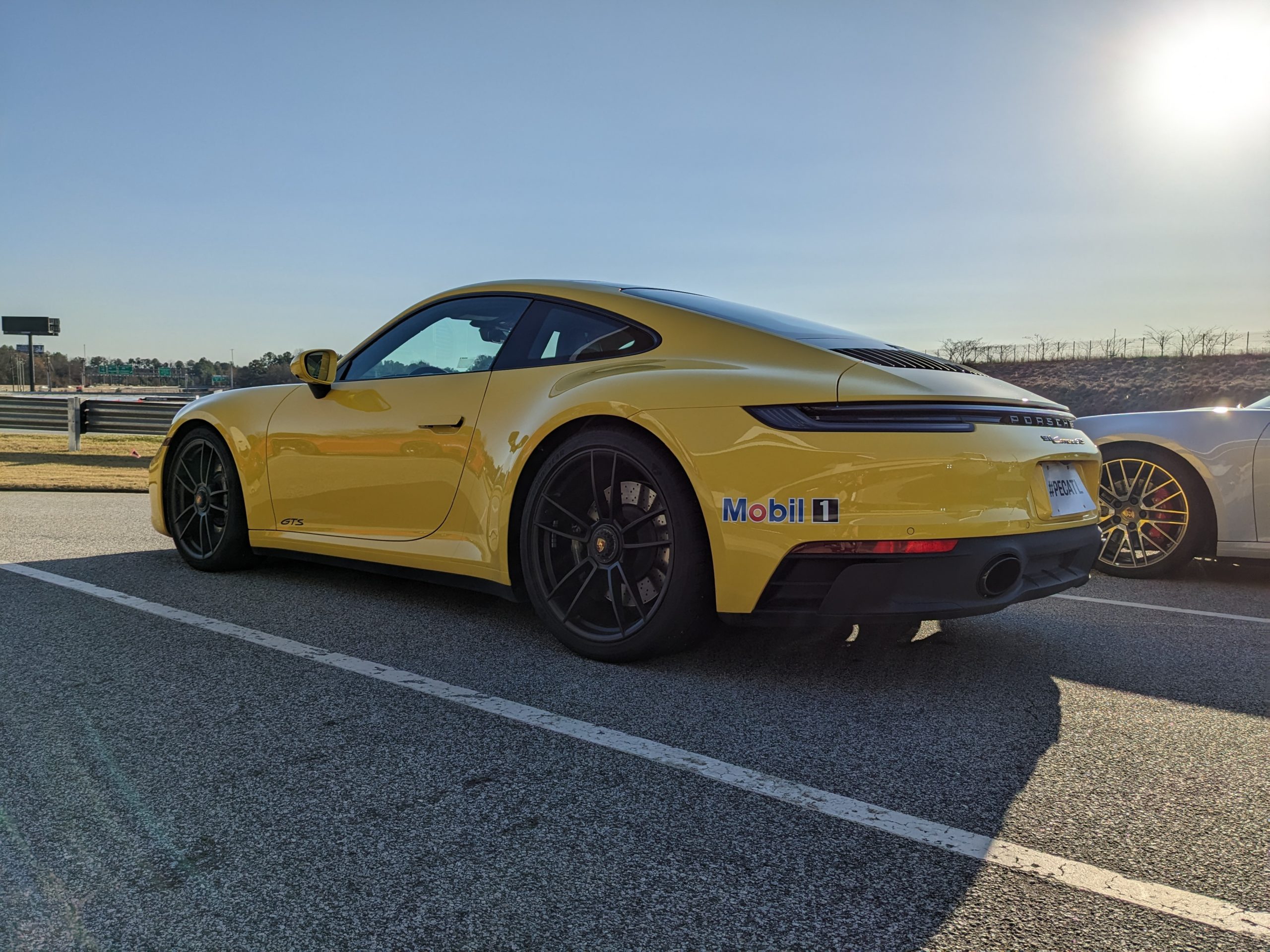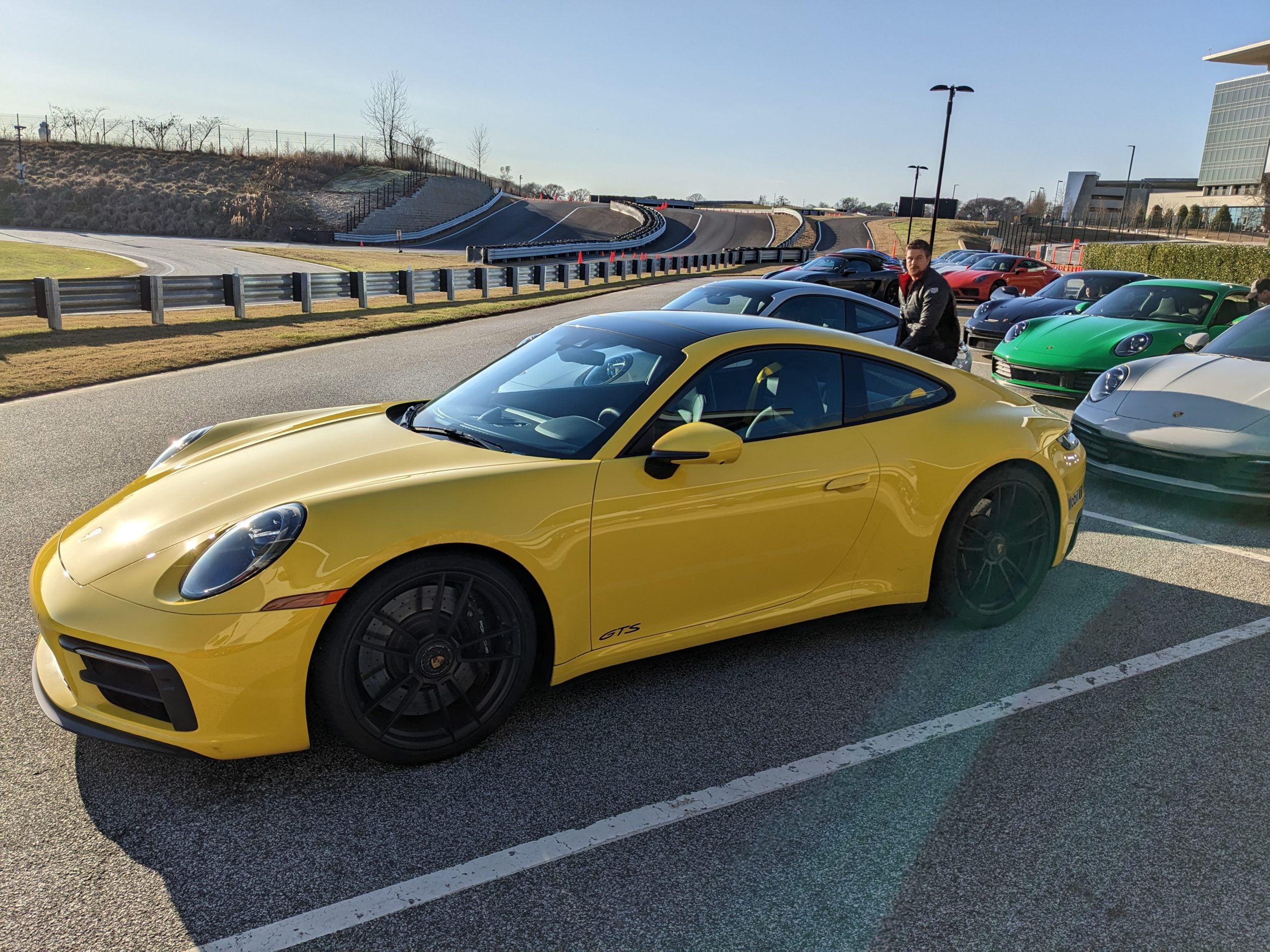
Compare the 992 GTS with the 991.1 and 997 Generations.
The formula for the 1st two generations of the 911 GTS was consistent. Extra power, improved chassis, and a few extra cosmetic bits all delivered in a naturally aspirated, two-wheel drive, wide body car. It was this last part that made the model somewhat exclusive as the GTS was one of the few possible paths to buy a naturally aspirated, two-wheel drive, wide body 911 Porsche.
Things started to change with the 991.2 model. To balance emissions with the unwritten rule that each new generation performs better than the last, Porsche transitioned to turbo-charged engines for all 991.2 Carreras. They didn’t stop there. As a nod to wide body cars looking and handling better, Porsche announced that all 911 models would be wide body beginning with the 992 generation.
In this drive forward, the GTS lost some of what made it special. In the past, it wasn’t possible to configure a Carrera S as a GTS from the factory, and it wouldn’t be practical to do it in the aftermarket. If you wanted a 911 GTS, then you had to buy one.
Porsche still won’t let you select most of the GTS options when configuring your Carrera S from the factory. Since many of the features that define a GTS in the 992 are cosmetic or “bolt-on” though, it’s never been easier to home brew a GTS.
As a GTS enthusiast, I have mixed thoughts about this evolution of the model. On one hand, I appreciate the exclusivity of the original GTS formula. On the other, the exclusivity seems to matter more “on paper” than the street. Buy these cars to drive them rather than focusing on them as an investment.
The History of Wide Body and Why it Matters is a top ranked GTSence post that delves into why this set-up looks and handles better. Porsche’s decision to move all Carreras to a wide body design is ultimately positive, since drivers of all 911 models benefit.
The move to turbos for all Carreras is more of a give & take. On the downside, increased complexity of the motor could ultimately affect durability and maintenance costs, and the addition of a “filter” in the exhaust track muffles the engine noise we love to hear.
It’s hard to appreciate the positives without driving the car though. I’ve spent hours in the earlier generations of the 911 GTS. Thanks to the Porsche Experience Center, I finally had the chance to compare the 992 GTS with the 991.1 and 997 generations.

I’ll start with the biggest difference that I noticed between the 992 GTS and the earlier cars. The torque is incredible. The naturally aspirated cars are fast by any standard, but they lack that “punch in the back” that comes from a car with 420 ft-lb of torque. I won’t dwell on it. Go drive one. You’ll be amazed by the difference.

While I still think a naturally aspirated engine offers a better sound, I’ll admit that the 992 GTS delivers an exhaust note that is impressive. Despite the turbo “filter” the car still makes head turning noises that enthusiast love. It was best in Sport mode as Sport+ eliminates some of the cracks and burbles. While true that some of these sounds are engineered, it’s hard not to smile when the symphony begins.
Handling is exceptional, and the chance to run the paces at Porsche Experience Center really helps to show the capability of the car in a short, 90 minute session. The 992 feels more like the 991.1 than the 997. They’re all GTSs, but the later generation cars give you more T than S as I’ve written in the past.

As a purist, I still prefer my naturally aspirated cars to the turbos. It might be nice to add a 992 to the garage though. Maybe a targa to go with the coupe and cabriolet?
1 thought on “992 GTS: Same Name, Different Car”
Comments are closed.